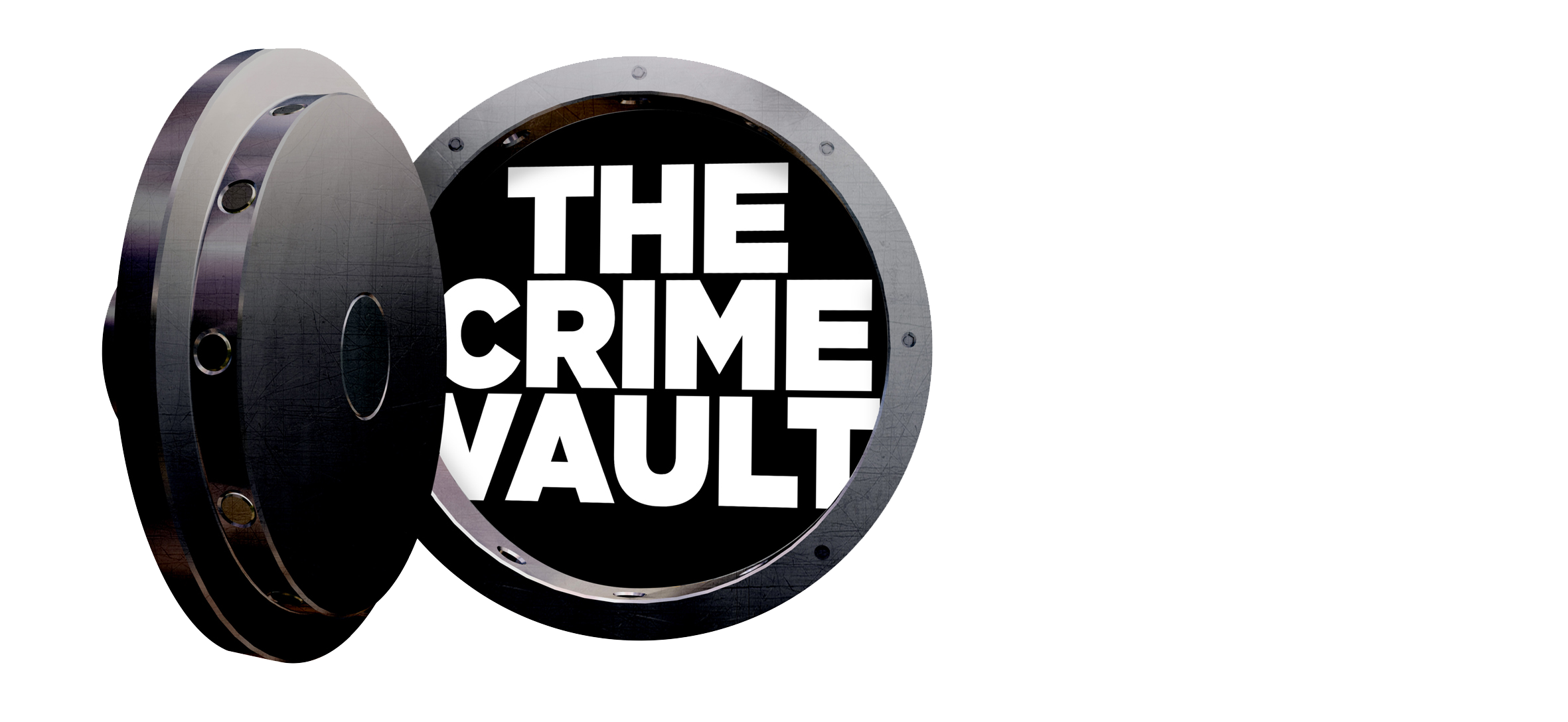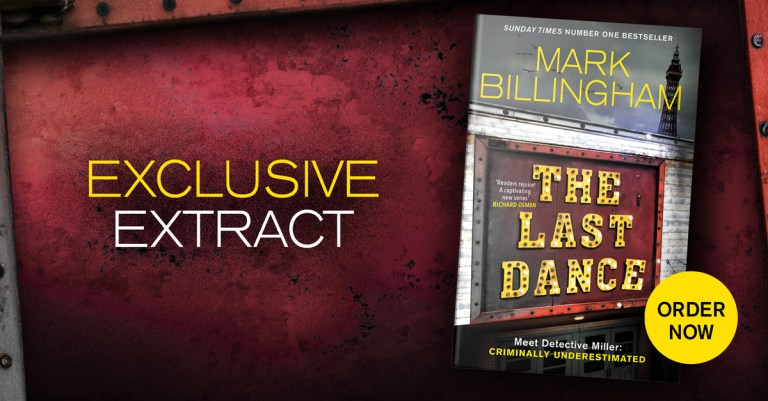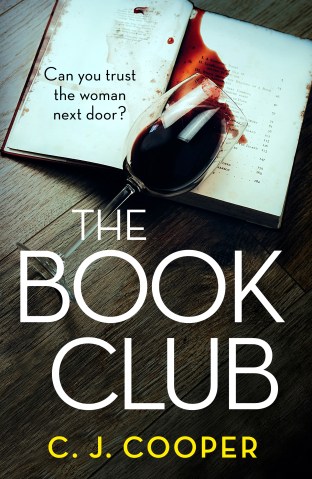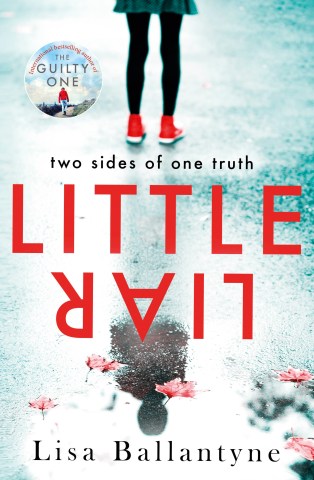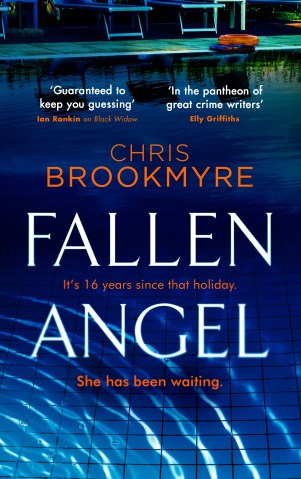Surgeons’ Hall exclusive extract
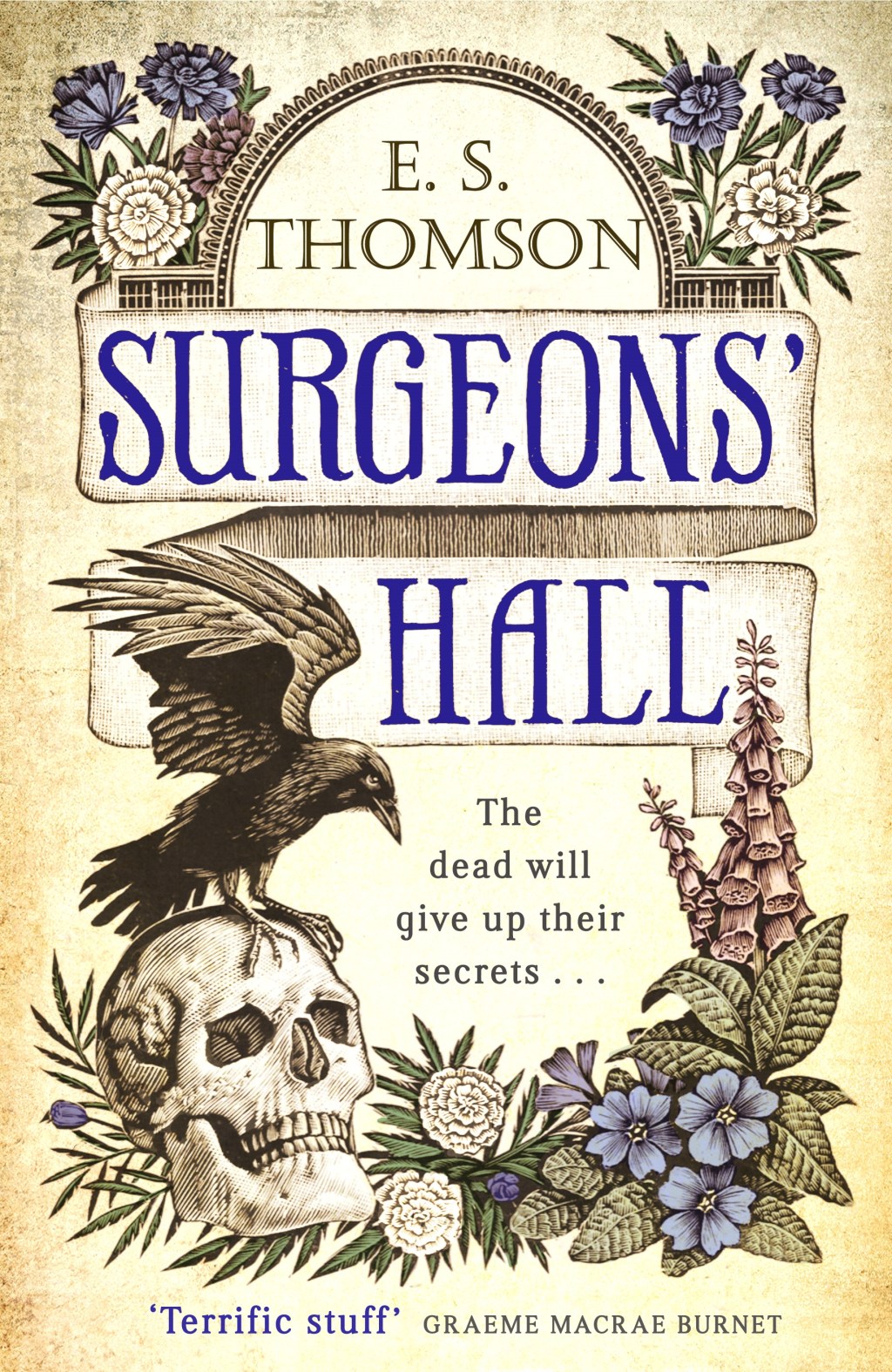
Hands
Not so many years ago it was customary to cut off a felon’s right hand and nail it above his head as he swung from the gallows. Why? Because though it is the mind that decides upon murder, it is the hand that commits the act.
The hand of man is the most sophisticated and expressive of all God’s creations. He may use it as a tool, as a symbol, as a weapon. The hands can swear, threaten, supplicate, question. We use them to express joy and sorrow. The blind see with them; the deaf speak. And when we wash our hands, do we not purify them? Make them clean? Innocent? What absolution might I achieve by washing mine? None at all.
For the fortune-teller, our lives are mapped out on our palms. Would my wicked deeds be visible there? For the physician, the hand offers signs of poor health: a bluish tinge suggests heart disease, a red hand might be indicative of gout. A cold, moist, flabby hand denotes sickness or emotional disturbance. Fear, perhaps. Or guilt. You see, it is the flesh of the hands that betrays us. What lies beneath – crimson muscle, threaded nerves, silken veins – tells us nothing. Even the bones, the hard, dry, clacking bones of fingers and thumbs are blameless, for one skeleton hand is very much like another. All these elements have their own beauty, their own intricate perfection and divine complexity. But who we are and what we have done is etched upon the flesh. It is in the pale, languid fingers of the leisured lady, or the hard, blistered palms of the labourer. It is in the needle-pricked thumb of the seamstress or the bitten-to-the-quick fingernails of the unhappy schoolboy.
And the hands of a murderer? To know the hands of a murderer you need look no further than mine.
Chapter One
It began innocently enough. A trip to Hyde Park. Will’s idea. He had been to the Crystal Palace many times already, though it had taken until the final few weeks of the Exhibition before he’d managed to persuade me.
He held his arms wide as we entered the main transept. ‘You see we are now inside, Jem? And yet—’ He pointed to one of the huge elm trees, dwarfed by the lofty nave of glass and iron that arched high above it. ‘And yet to some degree we are still outside.’ He took my arm, steering me through the crowds. ‘Is it not breathtaking? Consider its scope. Its ambition. Its grandeur. Ingenious too! Light but strong. It is modelled on the great glasshouses at Chatsworth, you know.’
‘Yes,’ I said. ‘I think everyone knows.’
‘Inspired by the design of the great Amazonian lily pads – gigantic natural structures supported by a network of veins so fine and strong that they can withstand the weight of a small child.’
‘Mm,’ I said. I did not like to admit it, for I had been rather dismissive of Prince Albert’s ‘greenhouse’, but I was impressed. I was not the only one, for there were people everywhere, their faces bright with excitement, the air loud with chatter. As the most skilled draughtsman at Prentice and Hall, his firm of architects and engineers, Will had been seconded to help illustrate the Exhibition catalogue, and had spent a number of happy months drawing images of stoves, ironwork, looms and engines of various kinds. I had already browsed a number of the exhibits whilst sitting at my apothecary table. There were only a few that caught my attention, for most seemed to be a mixture of the grandiose and the absurd.
‘A cloak that can be transformed into a boat for the use of country physicians? A mousetrap that can catch an infinite number of mice?’ I’d said. ‘These things have not been thought through properly. And I have no interest in seeing the world’s biggest diamond or a throne carved out of coal.’
‘There’s nothing that interests you?’
‘Only the models of Dr Silas Strangeway.’
Dr Silas Strangeway. Anyone with an interest in anatomy had heard of him. He was known to work in secret, the results of his labours kept in the private anatomy museum of Dr Alexander Crowe, a surgeon and anatomist with the highest reputation, with whom he had worked for over twenty years. Once, when I was an apprentice apothecary at St Saviour’s Infirmary, Dr Crowe had brought one of Dr Strangeway’s pieces to a meeting of the Pathology Society. It was a replica of the lungs, removed from the chest cavity and opened up to reveal a mass of tubercles clustered within. We had all agreed: it was like staring into a real anatomised lung at a real case of advanced tuberculosis. Somehow Dr Strangeway had even made the cavity glisten, as if it were coated with a layer of mucous. Whether the general public would be similarly impressed by his work I had no idea.
A few yards away a group of young men were gathered about the anatomical display cases. I had seen them going up the stairs ahead of us and had caught snatches of their conversation. Medical students. I wondered where they came from – possibly St George’s, which was at the corner of the park, perhaps from St Bride’s, which was not far from my physic garden, and was where Silas Strangeway and Dr Crowe were employed. I heard the chink of beer bottles, and saw from the young men’s ruddy cheeks and grinning faces that they had been drinking. They loitered in a huddle in front of an exhibit, talking and laughing.
Unwilling to join their ranks, Will and I occupied ourselves with the other wax models, waiting for the students to move off.
‘Silas Strangeway is the most gifted artist and anatomist,’ I said. ‘Though he’s known to be something of an eccentric too. Look at this one here – I think you’ll like it.’
At first, the model in the crystal and rosewood box appeared to show the face and head of a sleeping man. The right eye was closed, the expression serene, the skin smooth and flawless. And yet as one drew closer the face became something else entirely, for on its left side the skin had been peeled back in layers, flayed open to reveal the secrets beneath. The eye without its lid was a staring orb framed by crimson; the grinning teeth were cemented in bone and laced with blood vessels and nerves made up of the finest waxen thread. It was like beholding the miracle of life and the horror of death at precisely the same moment.
‘Taken from life?’ said Will, peering into the display case.
‘Taken from death,’ I replied. ‘The heads of a great many corpses will have been dissected to enable something as detailed and astonishing as this to be created.’ ‘Ingenious,’ said Will. ‘To show the mechanisms within so clearly and intricately. And you see how the thing is angled, so as to draw the eye from one manifestation of perfection to another?’
‘You don’t feel faint?’ I said, knowing his weakness.
‘It’s wax,’ he replied. ‘I should no more faint at the sight of a tallow candle.’ He was silent for a moment, then added doubtfully. ‘It is wax, isn’t it?’
Up ahead, with a bellow of laughter the medical students moved on. They were replaced by a man with his wife and children who had entered via the opposite door. Their unfashionable clothes proclaimed them to be from out of town, the sooty bloom on their faces suggesting a recent train journey. They reached the place where the students had been, and the four of them stopped. I saw that they were transfixed by something, though I could not see what it was. And then all at once a commotion broke out. The man collapsed to the ground with a muffled thump; his wife began screaming, the children – girls aged some ten or twelve years – joining in with a high-pitched wailing. Will and I bounded over.
‘I’m an apothecary, madam,’ I said, opening my satchel and groping inside for some sal volatile. ‘If you would allow me—?’
The woman was babbling something incoherent and pointing at the exhibits, but there was such a clamour coming from the children that I could not hear what she was saying. I loosened the man’s neckerchief and applied my salts to his nostrils. The next moment he dashed the bottle from my fingers and lurched to his feet. He snatched up his hat, and, with a fearful glance over his shoulder, ushered his wife, and still-wailing daughters, out of the gallery. I was about to observe how rude the people from the north of England were – and then I saw for myself what had caused all the fuss.
It was not an exhibit – at least, not in the proper sense of the word for it was not in a box of glass and rosewood. Nor was it made of wax. Instead, what lay before us was of real flesh and blood, the skin a greyish white, the exposed musculature a startling vivid scarlet. It was a hand – a man’s hand – and it was lying on its back between a display case of surgical cutlery and a wax model of the human heart. It had been partly anatomised, the skin on the palm slit from fingers to wrist and peeled back to reveal the red glistening stuff beneath. The flaps of flesh were held open with steel pins, stabbed through the skin directly into the table top. The work was neat and precise; skilfully done, given that pinning it in place must surely have been undertaken in haste, for the galleries were busy, and although the medical and scientific instruments exhibits were not the most popular a steady stream of visitors passed through. Most macabre of all, between the tip of the thumb and forefinger was a small square of card, the size of a carte de visité. Scrawled upon it in a crude, childish hand, were five ragged words.
It was not the first time I had seen a severed hand. Once, years ago, a workman had been admitted to St Saviour’s Infirmary, where I worked as apprentice apothecary. He was brought up on a cart from the warehouses on Gravel Lane, and was carried into the hospital by his friends on a makeshift stretcher – a length of tarpaulin slung between two wooden spars. I could see by their faces, and by the white, waxy skin of the man they carried, that I was about to see something unforgettable.
They told me that the man’s name was Henshaw, that he had become caught in the winding gear used to winch materials up from the quayside into the warehouse. His right hand had become trapped, the machinery had turned, and in one sharp vicious movement, it had been partially severed, partially torn off at the wrist. The man who addressed me was white-faced, his gaze appalled beneath the peak of his cap. He nudged his companion, who presented me with a package. I pulled back the bloody folds to find the missing hand, the wrist bones splintered like pale twigs of stripped willow. I remembered the hairs on it, dark and springing; still coated with a fine yellow powder from the sacks of spices the man had been unloading.
By some miracle, the fellow survived. A tourniquet applied by one of his friends had prevented him from bleeding to death, and he managed to avoid septicaemia by being attended to by Dr Bain, the most capable of all the surgeons at St Saviour’s. The shock too, which might have killed a lesser man, had been mitigated by the fact that he had been plied with copious quantities of cheap gin as he was brought up from the docks.
I had no idea what happened to him afterwards. With only one hand, and that his left, it was unlikely that his future was a prosperous one. I was more familiar with the fate of his lost appendage. It had been taken away by Dr Graves, St Saviour’s most enthusiastic anatomist, who had added it to his private museum, pickling it in spirits of alcohol so that he might show his students how skin, bone and muscle behave when they are torn apart.
I could see straight away that the hand before me had been neither torn nor roughly hacked from a body. Its removal had been a labour of time and precision, the joints of the wrist neatly separated from the larger bones of the lower arm. There was no sawing, slicing or splintering, merely a neat and exact dismemberment.
Behind us, I heard the sound of voices. A group of people had entered the room, their rustic clothing and buzzing accents betraying their provincial origins.
‘We must take this away,’ I said.
‘You cannot walk through London with a severed hand in your bag,’ hissed Will. ‘Not even you, Jem! Perhaps the police—’
‘And while we await them we are to leave this thing here, to terrify visitors?’
‘It’s probably no more than a prank. Those medical students—’
‘Quite possibly.’
And yet there was something about that grisly relic that troubled me. In my work at St Saviour’s Infirmary I had seen many a corpse hand; many a severed arm and anatomised body come to that, and I had also known many a student who had horsed around with organs, body parts and cadavers. It was the card that bothered me. The words upon it were scrawled in black ink: a clumsy, inexpertly written note that belied the neatness of the sliced and peeled flesh, as well as the Latin motto it described: et mortui sua arcana narrabunt. I slipped the card into my pocket.
I plucked out the pins that held back the skin of the palm, and lifted the hand. It was firm and clammy to the touch, but with no smell of the spirits that were commonly used to preserve anatomical specimens. The wooden surface where it had lain amongst Dr Strangeway’s exhibits was not damp, and there was nothing I could feel beneath my fingers that might yield some clue as to the provenance of the thing – no grit or dust or hairs. Opening my satchel, I pulled out a copy of the morning edition of The Times. I folded the flaps of skin back over the exposed muscle of the palm and rolled the thing in the paper like a piece of fried fish.
‘Where shall we take it?’ said Will.
I shrugged. ‘To Silas Strangeway, I suppose.’
Precognition for the murder of Mary Anderson,
18th December 1830.
Statement of SILAS STRANGEWAY,
anatomist and anatomical artist,
residing at 22 East Newington Street, Edinburgh.
Aged thirty-four years.
19th December 1830
In the spring of this year a pair of beggars appeared at the gates to the Infirmary. The pavement outside that building has always attracted those of a curious or hideous physical aspect, and these particular beggars were sisters known as Thrawn-Leggit Mary and Clenchie Kate (that is to say, Crooked-Legged Mary and Club-Footed Kate). The legs of both Anderson women were painfully bent and knotted with rickets, their spines curved into a serpentine ‘S’ by an extreme form of scoliosis. They had recently removed from the Shore area of the Port of Leith to the medical quarter of the town, and now lived at the foot of Robertson’s Close on the Cowgate, not two hundred yards from the Infirmary. They were remarkable not only for their deformities, but also for the fact that at odds with their twisted bodies they both possessed the most beautiful faces, and, in contrast to their bawdy repartee, were each blessed with a melodious singing voice.
It was widely recognised that the younger of these women, Thrawn-Leggit Mary, bore a close resemblance to my recently deceased sister, the wife of Dr Crowe. Mrs Crowe had been a great beauty, a kind and gentle woman of wit and intelligence beloved by all who knew her. Her death by smallpox was a terrible blow to Dr Crowe, who had married young, and, so it seemed to me, for love.
At almost midday on the morning of the 18th December inst. I was walking towards Surgeons’ Square when I saw Kate Anderson ahead of me. There were a number of students gathered outside Dr Crowe’s anatomy school. The door was open, and within I could see Dr Cruikshank the anatomy demonstrator. He was talking to Gloag the hunchbacked porter, Mr Franklyn one of our most promising students, and Dr Wragg the curator of the anatomy museum at Surgeons’ Hall. Dr Crowe was to instruct the students in dissection that afternoon, a class that usually took place over the course of some three hours. He liked to have everything in order before he began – the bodies brought up, the knives laid out, and all the receptacles and fluids at the ready – and it was Dr Cruikshank, with the help of Mr Franklyn, who saw to it that everything was just so.
It was usual for Dr Crowe to appear as the Tron Kirk on the High Street chimed the hour and not a moment before, and I knew that if he came at his customary time he was sure to meet with Clenchie Kate. Dr Cruikshank knew it too, for I saw him catch sight of the woman through the open door and steal a glance at his pocket watch. We all knew what aggrieved Kate, and why she had come up to Surgeons’ Square, for it was the same reason she came up every day now. Her sister, Thrawn-Leggit Mary, was pregnant, a condition which, given the extreme curvature of her spine and the angle of her hips, could lead only to the grave. The women claimed the child was Dr Crowe’s, and, as her pregnant sister now found it difficult to make the journey up from the Cowgate, for some weeks it had become a daily occurrence for Clenchie Kate to appear on her own with the sole purpose of screaming abuse at Dr Crowe as he entered the School for his midday class. Dr Crowe’s fellow anatomists, and some of the more robust students, took turns in deflecting the woman, usually with the aid of a few shillings, for she would not go away without payment.
That morning, Mr Franklyn stepped out. He was hoping to be appointed demonstrator, and was anxious to show himself to be worthy of the position.
‘Go back to your sister, madam,’ I heard him say as he tossed her a few coins. ‘Or, better still, bring her to us when her time comes, and we will do all we can.’
Clenchie Kate jabbed her crutch at him, and made the sign of the evil eye, for Mr Franklyn was known to have visited the sisters on many occasions. It was said that he had already made an arrangement with Rabbie McDade, the skeleton maker at High School Yards, for the stringing up of Mary Anderson’s bones.
‘You will cut her to bits,’ she cried. ‘You will cut her to bits and boil her bones. Has she not had enough of men wanting her body for their own purposes that you must murder her and butcher her too?’
Some of the students laughed at that, as though the idea of anyone slaking their desires on a body as misshapen and twisted as Thrawn-Leggit Mary’s was most amusing. But there were others who looked away, and in their faces I saw that if Dr Crowe had visited the girl then he was not alone.
Kate Anderson saw it too, and her language dissolved into abuse. Two porters appeared from the direction of Surgeons’ Hall and dragged her back the way she had come, and we returned to our business. It was reported by Gloag later that day that Clenchie Kate had been seen insensible with drink in the Grassmarket even before the hour was out.
We thought that was an end to it – for that day at least. But there was worse to come. It was late in the afternoon when it happened. I was in attendance because I had made several preparations of the heart – in its entirety, and also in cross section, the aorta and valves, the strings and powerful muscular sides of the organ clearly revealed. I was proud of these creations – undertaken in wax and, if I may say so, an impressive simulacra of that most vital of organs. I was not usually present at Dr Crowe’s lectures, but I wanted to see the response of the students to my models. It is well known that Dr Knox, our most famous rival at Surgeons’ Square, is dismissive of any teaching aid other than the cadaver itself, and I was keen to prove him mistaken. It was for this reason that I witnessed first-hand the events that took place that afternoon.
It was after half past six. Dr Crowe was concluding his lecture on the circulation of the blood, the last class of the day, when a terrible wailing and moaning came to us from the passage outside. We heard shouting, and a cry of pain – I learned later that the woman had bitten Gloag’s hand and thrashed him with her crutch as he tried to drag her back onto the street. There came the sound of cursing, and then the barking of a dog as one of the porters’ boys ran to untie the terrier used by Dr Cruikshank to chase the rats from the dissecting room. Before the dog could be brought up, however, the door to the lecture theatre burst open.
Mary Anderson lurched in, her crutches dragging, her gait a crab-like shuffle. She locked the door behind her and flung the key aside. Mr Allardyce – Dr Crowe’s apprentice, and a young man always keen to show his loyalty – leaped to his feet to protest at the intrusion, but Franklyn pulled him back down. I heard him whispering, ‘Sit still, Allardyce. This is none of your affair.’ The other young gentlemen, clearly in anticipation of a lively ending to the day’s work and knowing the deep love and respect Allardyce entertained for Dr Crowe and his late wife, hissed at him to shut up and stay seated.
I could see that Mr Allardyce was aggrieved at this, no doubt because my niece, Miss Crowe, a regular attendee at her father’s lectures, was seated in her customary position in the front row and had the best view of what might unfold. I was tempted to go across to her, or to try to halt proceedings myself – and yet I did not. It is an error of judgement I will regret for the rest of my life.
Instead, I sat transfixed. The servitors had lit the lamps hours earlier for it was mid-winter, and in the guttering candlelight Mary Anderson’s resemblance to my dear sister was more striking than ever. She had a luminous ethereal loveliness, no matter how bunched and twisted her body, and as I looked at the students’ faces I knew they all saw it too. I could not help but take a sketch – a quick ink drawing that caught the lines and angles of the girl’s cheeks, the dark, tragic eyes, the fine brows. I had drawn her many times, though never had she looked so distraught, so passionate, as she did that afternoon.
As for Mary, she peered up at us, up at that silent jury of men and her lip curled in a sneer. After that, she paid us no mind at all. She had eyes only for Dr Crowe, who stood motionless before her, a drawing of the heart in red chalk on the blackboard behind him.
‘You have killed me,’ she cried. Her voice was shrill against the thumping of Gloag’s fists against the locked door. ‘The babe that you have put inside me is my murderer. And I will take its life as it takes mine, for there’s nothing to be born alive from a body as foul and twisted as this one.’ She used the Scots word ‘thrawn’, ‘as thrawn-leggit, an’ bough-haunched, as this ’n,’ her native tongue giving her words a rough poignancy that was not lost on us.
I thought Dr Crowe might speak, might bluster her remarks away with a wave of his hand, but he did not. Instead, he bowed his head and allowed her words to fall like blows upon his shoulders. ‘You have killed me,’ she repeated, ‘and you have killed our child. Why should you be suffered to live?’
His waistcoat that day was of blood red silk. I had admired it on many occasions, thinking how appropriate a colour it was for a man in his line of work. And so when the woman pulled out the knife and plunged it into his heart we saw nothing but the shock on his face, and the clutching of his fingers about the blade.
True on soul and conscience,
Silas Strangeway
'Superb' Sunday Express
A gripping and darkly atmospheric thriller set in Victorian London, perfect for fans of The Seven Deaths of Evelyn Hardcastle, The Strangers Diaries and The Silent Companions.
What secret grips Corvus Hall?
Visiting the Great Exhibition to view the wax anatomical models of the famous but reclusive Dr Silas Strangeway, Jem Flockhart and Will Quartermain find a severed hand, perfectly dissected and laid out amongst the exhibits. Assuming it to be a prank by medical students they return it to Dr Strangeway, who works at Corvus Hall, a private anatomy school run by Dr Alexander Crowe - once one of Edinburgh's most revered anatomists. Jem's persistence reveals that a body does indeed lie in the school's mortuary, minus its right hand. The body has no provenance. More macabre still, its face has been dissected making identification impossible.
All is not as it should be at Corvus Hall. Dr Crowe's daughter, Lilith, visits the mortuary in the dead of night. Her twin sisters, Sorrow and Silence - one blind and one deaf - exert a malign influence over the students. Organs, freshly dissected, appear in the anatomical museum. Fear grips lecturers and students, even as something unseen binds them in a bloody pact of silence.
Praise for E. S. Thomson's novels:
'Gothic. Gory. Glorious . . . E. S. Thompson's Jem Flockhart books are the best I've read in years. Jem is just my kind of heroine: scarred, smart, complex, and unapologetically queer' Kirsty Logan, author of The Gloaming
'Love evocative descriptions of Victorian London and brilliant plotting? Then grab a copy of this!' Rebecca Griffiths, author of The Primrose Path
'Here's a tale of Victorian London to freeze your blood on a cold winter's night' Evening Telegraph
'Jem Flockhart's London is vivid, pungent and perilous' Chris Brookmyre
'Complex, harrowing and highly enjoyable' Daily Express
'A marvellous, vivid book' Janet Ellis
'Jem Flockhart is a marvel . . . This vivid journey into the dark side of the human soul is a thoroughly engrossing tale' Mary Paulson Ellis, author of The Other Mrs Walker
